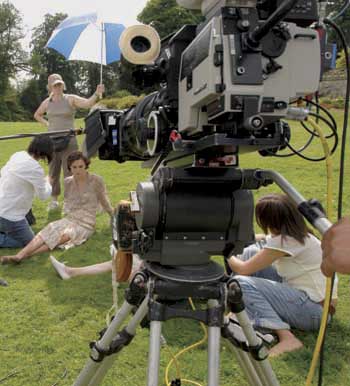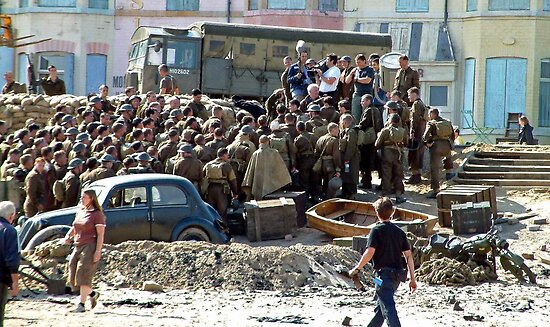Welcome back to the Connections blog and to our look at the adaptation of Ian McEwan's best-selling novel, Atonement. In this entry we will take a look at the editing of the film and will draw connections between the original novel and the edited version of the film. The editors have a very important role in the production as they are responsible for wading through hours of footage to ensure that the plot of the film mirrors that of the novel as much as possible.
The editing for Atonement is very innovative and different than many of the films of its time. Director Joe Wright and his editing staff are very unique in many of the editing and filming methods they use. This of course, lends itself well to the uniqueness of the plot of Atonement. For example, Wright chooses to revisit certain moments in the film, such as the scene at the fountain; from the perspective of different characters. I believe that this technique helps a viewer who has not read the novel, to better understand the complicated plot. It is refreshing to see that Wright's style of filming is very different and much more visually appealing than most of the in-your-face action and drama films, which dominate the box office these days. The cinematography in this film is stunning, which allows for a great deal of artistic freedom for the editors.
The editing is also quite seamless; yet often changes up in ways which one would not expect. I find that this style is much more visually engaging, and it keeps the viewer focused on the most important aspects of the film. This is very positive when considering the adaptation to film, because given the amount of detail Wright puts into his work, he is ALMOST as detailed as the great Ian McEwan himself.
At different times in the film, Wright also chooses to rewind a scene for emphasis, yet also chooses to leave the long shot of Dunkirk, almost completely uncut. This is a clear indication of Wrights abilities as a director. Just as he focused his efforts on cinematography, Wright wanted as much as possible for the editing techniques to mirror the emotional or physical state of the scene. Theses actions demonstrate his dedication to intricate detail, and make the viewer realize that they are lucky that he was chosen as the director.
More and more as we look at the different elements of this film, it becomes clear that a great deal of time and thought has gone into the adaptation process. From casting, to editing, to setting and even history; so far everything that we have investigated has demonstrated that Wright and all of the cast and crew show a great deal of talent, and worked very hard to ensure that the adaptation was as accurate as possible.
Connect the Dots:


No comments:
Post a Comment